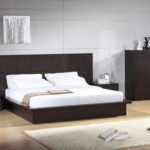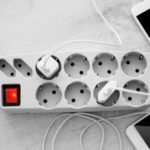Dust is everywhere in your home. You’ve cleaned your house spotlessly many times, but dust still appears after a while. Even if you keep the doors closed, dust still manages to find its way into your rooms. Where is it coming from?
It’s best to understand the source of dust to effectively address this annoying issue. Let’s explore the reasons why dust keeps appearing even when you keep your doors shut.
1 Where Does Dust Come From?
You might not be aware, but 80% of dust is generated within your very own room, and only 20% comes from the outdoor environment.
Dust from Door Cracks
Dust and fine dust particles are extremely small and invisible to the naked eye. Thus, even with closed doors, countless fine dust particles can still easily slip through the narrow gaps in your doors.
Moreover, each time you open or close the door, you create an opportunity for dust to effortlessly enter your home.
Dust from Carpets, Bedding, and Curtains

It’s a fact that household items like bedding, carpets, and clothes are havens for countless dust mites. When we use these items, tiny fibers from the fabric shed and form dust.
Additionally, door mats act like magnets, attracting a significant amount of dirt and dust every time we wipe our feet. These dust particles are so tiny that they are barely visible to the naked eye, which is why we often overlook them.
Dust from Electronic Devices and Appliances

When electronic devices and appliances are turned on, they generate static electricity, attracting dust and dirt from the surroundings. Furthermore, they also indirectly cause air circulation, dispersing dust throughout the room.
This explains why appliances like televisions, fans, refrigerators, and air conditioners quickly accumulate dust after a thorough house cleaning.
Dust from People and Pets

As you know, we come into contact with a lot of dust and dirt from the outdoor environment every day. Each time we return home, we indirectly bring in dust and bacteria clinging to our clothes, shoes, hands, and hair.
Similarly, for those who have pets, they are another source of dust in your room. Moreover, pets shed hair and fur, making your room less clean.
2 Ways to Reduce Dust in Your Home
Regularly Clean Door Cracks
Door cracks are often overlooked during cleaning. Therefore, it’s essential to pay attention to them to prevent the accumulation of dust.
Additionally, you can use thin curtains to cover the doors, hindering dust from entering your home. Don’t forget to regularly wash and clean these curtains.
Wash Bedding, Curtains, and Pillows at Least Once a Week

Washing these items not only keeps your home clean but also helps you and your family stay away from potential diseases hiding within them.
It’s recommended to wash your pillows and mattresses at least once a week because we unknowingly bring dust and bacteria from our bodies and transfer them to our beloved beds. For carpets, it’s best to use a vacuum cleaner to keep them dust-free. Alternatively, you can contact a professional house cleaning service for periodic deep cleaning.
Pay Attention to Cleaning Electronic Devices in the Room

Use a soft, slightly damp cloth to wipe down electronic devices. You can also moisten the cloth with alcohol to disinfect the equipment.
Pay close attention to cleaning the small gaps and corners hidden by the devices. Leaving even a small spot untouched can lead to a quick buildup of dust.
Gently Brush Off Clothes Before Entering the House
This is extremely important, yet we often neglect it. Dust and bacteria cling to our bodies after a long day outdoors. So, when you get home, take off your coat and hat and gently brush them to remove the dust. Then, wash your face and hands, and take a shower if possible. It’s best to change into a fresh set of clothes before starting any other tasks.

Never lie down on your bed without changing your clothes first. This habit not only makes your bed dirty but also transfers germs and bacteria from the outside to your bed.
The information provided above should give you a better understanding of dust and help you choose effective solutions to keep your room dust-free.




































